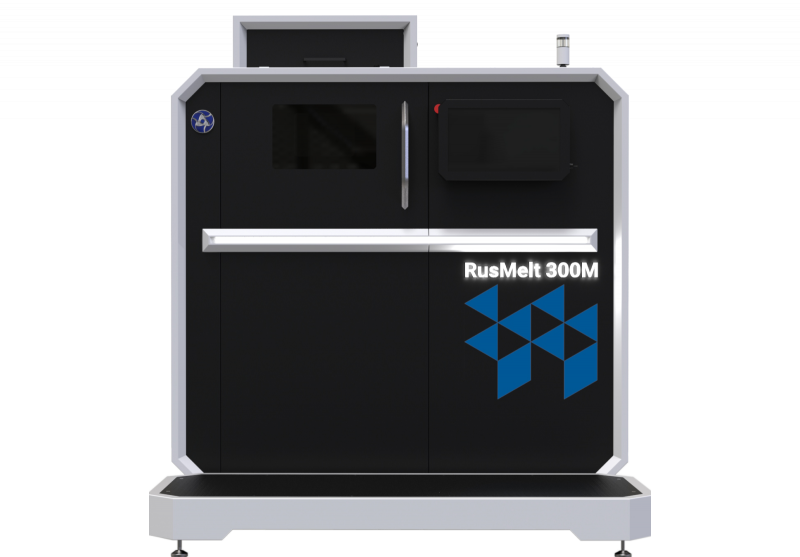
Rosatom-Additive Technologies (RusAT) opened its first Additive Technologies Centre (ATC) at the site of the Moscow Polymetal Plant.
The center will be used to develop made-in-Russia manufacturing technologies. The center will also serve as an additive manufacturing flagship for Russian industry, proving that AM is an effective companion industry.
The ATC is operated by Rosatom’s AM devision, RusAT, which is a subsidiary of the state-run nuclear energy corporation. The state corporation operates a relatively closed system of nuclear power plant production that favors made-in-Russia strategic manufacturing. Its subsidiaries cover the gamut of nuclear energy processes. TVEL, for example, enriches uranium fuel; the company also operates as Rosatom’s intermediary holding corporation for RusAT. Another subsidiary, Atomenergomash, produces the VVER nuclear power plant. This Soviet-era pressurized water reactor design is used in former East-bloc countries and in Russia proper.
Rosatom’s Moscow facility joins these enterprises at the old Polymetal Plant site. This site was home to a Soviet-era nuclear waste facility, and concerns have been raised about building structures and infrastructure so close to an abandoned waste facility.
The ATC thus joins Russian enterprise as the first industrial made-in-Russia 3D production facility, but it does so under a cloud.

RusAT’s CEO, Turundaev Mikhail Alekseevich.
The links between RusAT and Russia’s nuclear energy market suggest that the AM technology currently being developed and deployed will fold into nuclear production capacity. American researchers and businesses have, for example, used AM to build nuclear reactor parts. Researchers at the Oak Ridge National Laboratory recently printed a reactor core.
These American activities and RusAT’s national mission to acquaint Russian industry with AM are nothing but suggestive of Rosatom’s ambition, which was reported on by this network in 2017. The state-owned company aims to produce a printer for nuclear energy applications.
The ATC was created as the first production site to have a single engineering and development centre. It is unique because it combines equipment assembly (3D printers), printing, post-processing and laboratory space for product research and sample testing in a single facility. This multi-faceted space allows RusAT specialists to verify designs and technological solutions immediately after production. Engineers and technicians can quickly adjust and improve designs.
Alexei Likhachev, Rosatom’s Director General, said commented on the opening:
The first Additive Technology Centre underlines Rosatom’s role in creating a new technological paradigm in the country. This is an extraordinary event not only of industry, but also of national scale. A lot of work lies ahead to create a whole network of such centres, first of all in the cities and regions where Rosatom enterprises operate. The next center of this kind will open in Novouralsk at NPO Tsentrotekh, another enterprise of [the] TVEL Fuel Company. The development and application of these technologies is of great importance for the entire nuclear industry. We have solutions related to application of additive technologies in production: from creation of elements of this or that product to large supplies of equipment. [Translated]

The RusMelt 300 SLM printer.
The ATC is equipped with Rusmelt 300M, Rusmelt 600M and Rusmelt 600 RM 3D-printers for metal powder printing by SLM technology, produced by Rosatom. These printers run on Russian software that fulfills international manufacturing and control standards. The Rusmelt 600M printer, which boasts a 600×600 mm build area, can, moreover, print unique products using laser metal powder melting (SLM).
RusAT’s CEO, Mikhail Turundaev, commented on the AM producer’s ambition as a state-owned enterprise:
Rosatom’s first Additive Technology Centre is a pilot site where we will form the best technological offerings and business solutions for our customers. Once the printing regimes have been fine-tuned, it will be possible to accept orders. By the end of 2021, we plan to implement the launch of the full cycle of additive manufacturing. At the current stage of additive technologies market development the equipment already installed at the Centre and to be installed during 2021 will allow us to completely cover our customers’ needs. As for financial figures, within the framework of Stage 2 project implementation the planned revenues of CAT in 2030 will exceed 300 million rubles.
Further evidence of Rosatom’s made-in-Russia strategy comes from its choice of contractor for this work. The contractor for the design of the ATC was the Central Design and Technology Institute, which is another enterprise of Rosatom’s fuel company, TVEL, the subsidiary that owns RusAT.
